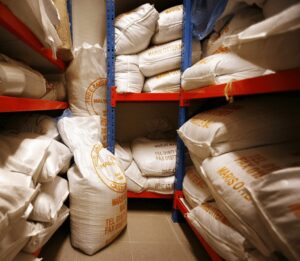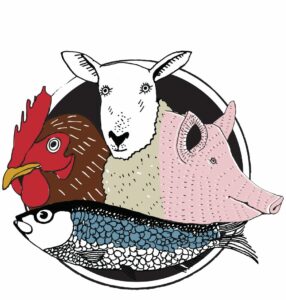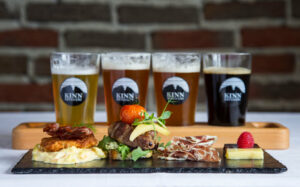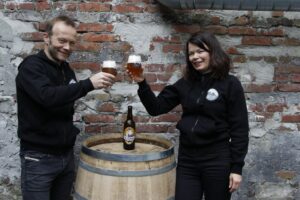About
Home-brewing has been my passion since my teenage years. The quality of the beer from these early days was variable, to say the least. But the joy of making something was my motivation. From using juniper extract in the mash, gradually my knowledge grew and the quality of the ingredients improved. As the new millennium dawned the quality was so good that I started to enter competitions hosted by Norbygg – the Norwegian Association of Home-brewers – and winning prizes. I became Home Brewer of the Year two years in a row. Among those involved I met craft beer pioneers Kjetil Jikiun and Jens Maudal, and not long after these two enterprising souls were launching their own brewery.
Some years later, in February 2007, as I lay on the sofa with a leg in plaster, I reached a decision: To leave my job as a science teacher and start Kinn Brewery. My dear wife, Ann-Magritt, lent her support, but was probably not prepared for the hectic and financially rather meagre years to come. Thanks to a seed loan from Innovation Norway, renovation loans for our house and support from the family, Kinn Bryggeri AS was incorporated in April 2009.
In the meantime I had been chatting with many early brewers: Nøgne Ø, Haandbryggeriet, Ægir, Baatbryggeriet, Lillehammer Bryggeri and Små Vesen. Gradually equipment was assembled: malt mill from Haandbryggeriet, boiling vats, vortex unit and much else from Små Vesen, mash vats, hot water tank, storage tanks and open fermentation vats from Tine Dairy. Bit by bit, the brewery was completed. The only pieces of gear bought new were the heat exchanger and hoses. I couldn’t risk using second-hand here – a bacterial infection would have been a very inauspicious start. During this collecting phase, there was nowhere to store the equipment except my garden. Luckily, my ever-patient neighbours accepted the growing pile of cast-offs. A great deal needed to be reworked to suit my needs. Some rather clever local welders helped out, expanding the capacity of the boiler and cooling jacket for the fermentation vats.
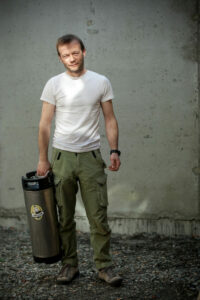
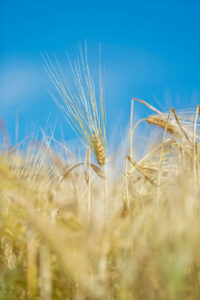
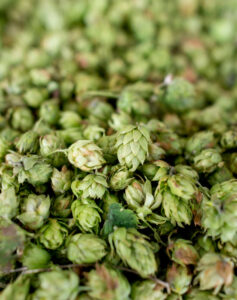
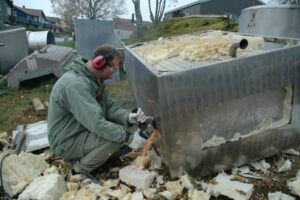
While searching for a suitable building I was offered a former shop in Strandgata, close to the Town Hall and across the street from the largest pub in Florø, Hjørnevikbua. Much restoration work was required before brewing could start. The room plan needed adjustment, power ratings had to be upgraded, a new floor was poured and ventilation was needed. Working on a tight budget with many long days and lots of voluntary efforts by friends and family saw the premises completed in November 2009.
On 30 November, I received my production licence, and the first batch of Pilegrim (Pilgrim) was the result. Although the fermentation process was rather too long due to not enough yeast, I was able to harvest yeast sufficient to set batch number two: Sjelefred (Peace of Mind). Fermentation sped ahead and by 11 December I could invite guests to sample the wares across the road in the pub. Given the season, the label declared Julefred (Yuletide Peace). But whatever we called it, the beer tasted heavenly: fruity, caramel, roasted coffee background. It was served like real ale, hand-siphoned from stainless steel Cornelius kegs. My greatest moment as a beer-brewer came when I could relax on the right side of the bar and buy a glass of my own ale.
Launching a brewery in Norway in the early 2000s was not a simple matter. All honour to those who managed to do so and persisted. By 2009, such endeavours were more acceptable, as people realised it could be a more viable project than just a few years prior. I could see what the early pioneers had done right and wrong. Tapping and labelling small bottles by hand was not the road forward. Instead I focused from the outset on selling as much beer as possible in convenient kegs. From the days of home-brewing I had intimate knowledge of Cornelius kegs. These steel units holding 19 litres were previously very popular for dispensing soft drinks. I purchased a large consignment on the cheap and persuaded my uncle to build a keg-washer from a water heater. The brew could be tapped manually into the keg, allowed to condition in the keg, and served by hand-pump from the keg with the aid of carbonation pressure. What was also apparent was that I had to put bottled beers on the market if we were to have any income to keep the wheels turning. From Germany we obtained an elegant 75 cl bottle, and I recognised at once that this was the perfect branding package for us.
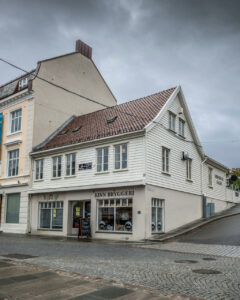
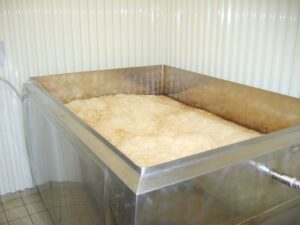
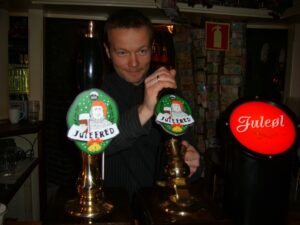
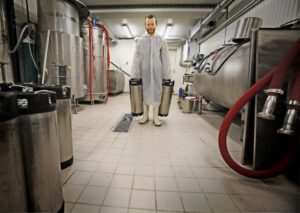
In 2003, I moved with Ann-Magritt into the old community centre in Florø, Kinnhuset. Here the kitchen brewery was called Kinn Bryggeri. In 2005 we got married on the island of Kinn, west of Florø, in a stone church dating back to the 1100s. When we decided to open a brewery the name was self-evident, and of course our logo had to be the majestic mountain on Kinn, known as Kinnaklova, with its characteristic cleft that mariners have navigated by for centuries.
Early on in the planning, I got to know our local graphic artist, Oda Valle. At the time she was living on Svanøy, one of the islands around Florø, working to set up her own design studio. I believe we were her first clients. We hit it off and started to work on our branding. My idea was that the beer drinker should have an enjoyable experience all the way from first catching sight of the bottle on the shelf, to consigning it to the bottle bank for recycling. I wanted a dependable, traditional figure on the label, and after some discussion it was decided to use the nynorsk variant of Norwegian, and to illustrate our products with the “Father of New Norwegian”, Ivar Aasen. Of course, Oda has developed his portrait in her own inimitable way, but it really is him we are honouring. Since then, beer-blogger Hugo Ivan Hatland has pointed out that the figure resembles the former parson of Kinn, a happy coincidence perhaps. The graphic saga continues with new personalities being added as new beer varieties are released.
It was also vital that the brand followed a theme. We wanted to launch new varieties and be sure that the consumer would immediately recognise craft beers from Kinn. The 75 cl bottle was the ideal brand-bearer. The same size as a wine bottle, it fits beautifully on the Vinmonopolet shelves, reflecting the tradition of the premier Belgian breweries. We cannot claim to have invented the expression “sharing beer”, but we have made a big contribution to the concept of sharing a bottle.
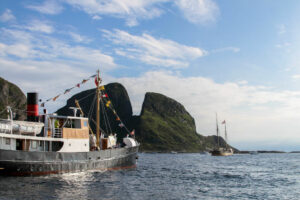

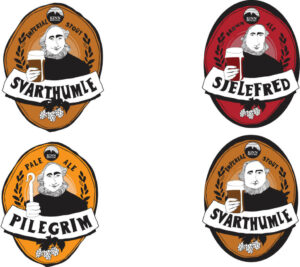
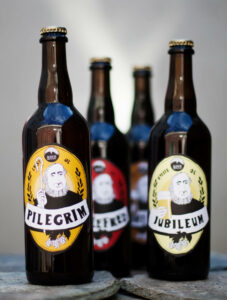
To begin with I was the only person working in the brewery: brewing, tapping, washing, sales, deliveries, supply side, and more. The days were long, but things started to pay off. In 2010, we brewed 700 litres once a week, just sufficient for the company to survive. As the year ended, I could count eleven different varieties: Pilegrim, Sjelefred, Julefred 4.7% and 6.7%, Vestkyst, Jubileum, H. Hjørnevik, Målstefna, Knutholmer, Dampen and Svart Hav. My brother-in-law, Henri Banne, was a great asset in production, and wheels were turning. We found patrons in leading beer parlours and stores in major towns, and were no longer simply a local brand.
The principal idea about starting Kinn Brewery was to create the same beers I had made at home in the kitchen, and get them out to beer lovers in Norway. The quality of Norwegian craft beers is second to none, so to make an impression I had to be just as brilliant as Nøgne Ø and Haandbryggeriet. I wanted old-fashioned craftsmanship to be the focus. I did not want to create a miniature version of an industrial brewery, where you press a button and never see the product until it reaches the glass. Open, oxygen-rich fermentation vats were the only true way for me. It is really fascinating to watch fermentation from the moment the wort enters the vat: using a spade to remove the head and harvest the next generation of yeast; watching how the head changes character and knowing precisely when the beer is ready for conditioning in the storage tank.
We can never abandon this yeasting process.
Originally, there was only the one yeast variety in production, Wyeast 1318 London Ale III. It was chosen as a dependable sort, with the right taste profile and – not least – fantastic for top harvesting. The foam as the fermentation comes to an end is 5-10 cm tall, compact and easily spooned off. When we started producing Jubileum for Florø’s 150-year anniversary in May 2010, we requisitioned Wyeast 3787 Trappist High Gravity. I was also well versed in this type from the home-brew years, and recognise it as an incredibly versatile yeast suitable for a long list of various Belgian beer styles.
Open tanks bring a mix of advantages and drawbacks. On the down side, there is more manual work involved, and it takes floor space to rely on open tanks. But these are small compared to the advantages. Open fermentation produces beers with a flavour intonation that surpasses anaerobic brews. The yeast flourishes in abundant oxygen, invoking a mature note to the product. Beer fermented in open vessels is notable for its mild, round flavour, so it is possible to create strong-tasting beers that are non-aggressive. Another advantage is that the yeast thrives so well in the open that we can recycle it many times more than in closed tanks. If you treat the yeast well, it will repay you with the best beer.
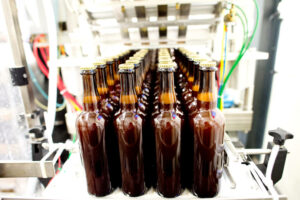
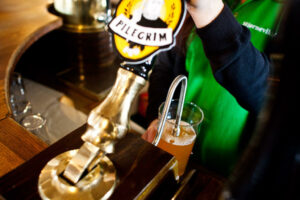
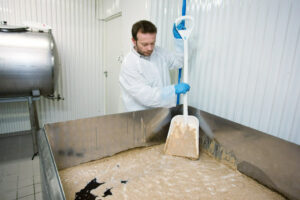
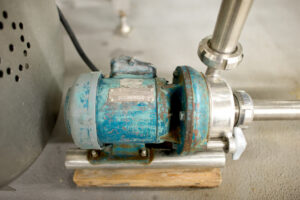
In spring 2011, we commenced sales to the Norwegian Wine Monopoly, Vinmonopolet. Results were above all expectations, especially for Vestkyst, Slåtteøl and Bøvelen, which were more often sold out than on the shelf. So we had to work on increasing capacity: We acquired a semi-automatic bottle filler and labelling unit. This was welcome, as hand-tapping and hand-labelling had lost their appeal. New employees were hired and plans for a new brewery took shape. After much delay, we moved into new premises in Bjørndalvegen in summer 2013. Our capacity had then increased from 800 to 3500 litres, but our tapping capacity remained the same. All honour to the brewers and production workers who dedicated their working lives to our old Meheen tapping machine until the new line was ready in summer 2014. Thanks to this tapping line, we now have capacity to supply beers on a larger scale than ever before and even have potential to grow.
Over the years we have engaged many master brewers and it is fun to watch how many have left to start their own operations after working here. Anders Cooper started Austmann and bought our old brewing kits from Strandgata. Tom Dahlberg started Harstad Håndverksbryggeri where he concocts English styles in open fermentation vats. Pål Rolfsen started Monkeybrew in Trondheim, and Bjarte Halvorsen launched Salikatt in Stavanger.
Today, we are a medium-size operation with 14 employees. Ann-Magritt has been involved throughout the entire journey, but started to specialise on active sales and marketing in autumn 2014. Part of her mission is to expand the export market, and presently you can buy Kinn Beer in Denmark, Sweden, Finland, UK, Russia, Germany, Belgium and Spain.
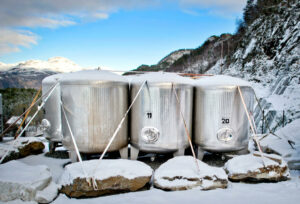
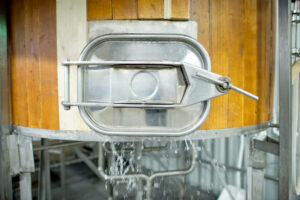

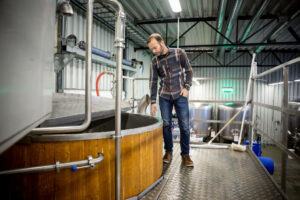
As Kinn Brewery has inexorably expanded, my days are spent less on brewing and more on warming my office chair. I had to put this right, and summer 2016 will see my return to my passion, brewing in Strandgata. In spring 2016, we obtained more scrap tanks for conversion to brewery utensils. The Old Brewery in Strandgata features open fermentation vats for 25, 400 and 800 litre batches. We have special vessels for yeasting the beer, using bacteria and wild yeast, separate from our normal brewery lines. We have a dedicated, temperature-controlled oak cask storeroom where beer can mature, and a cool cellar below ground for long-term storage. This is an excellent workshop for developing new recipes, ideas, fun ingredients and trials of new methods.
All the time we have been preoccupied to combine food and beer, so we have a special Beer Pairing Chart to set out the options online. We work with restaurants to match beers to menus. In summer 2017 we opened a beer café named Vesle Kinn in the same location as the Old Brewery where we serve twelve different beers on tap. Beer engines supply two of our cask beers. In addition we have quite a good menu of bottled beers from our own production, but also featuring other Norwegian and international breweries. Sampling new brews, studying the fermentation process in open vats, and soaking up the atmosphere of a real-life craft brewery is all part of the Kinn Experience.
